Christmas Food and Feasting
The Meals Series
Series Editor
Ken Albala, University of the Pacific,
The Meals Series examines our daily mealsbreakfast, lunch, dinner, teaas well as special meals such as the picnic and barbeque, both as historical construct and global phenomena. We take these meals for granted, but the series volumes provide surprising information that will change the way you think about eating. A single meal in each volume is anatomized, its social and cultural meaning brought into sharp focus, and the customs and manners of various peoples are explained in context. Each volume also looks closely at the foods we commonly include and why.
Books in the Series
Picnic: A History , by Walter Levy
Breakfast: A History , by Heather Arndt Anderson
Barbecue: A History , by Tim Miller
Afternoon Tea: A History , by Julia Skinner
Christmas Food and Feasting: A History , by Madeline Shanahan
Christmas Food and Feasting
A History
Madeline Shanahan
Rowman & Littlefield
Lanham Boulder New York London
Published by Rowman & Littlefield
An imprint of The Rowman & Littlefield Publishing Group, Inc.
4501 Forbes Boulevard, Suite 200, Lanham, Maryland 20706
www.rowman.com
6 Tinworth Street, London SE11 5AL, United Kingdom
Copyright 2019 by The Rowman & Littlefield Publishing Group, Inc.
All rights reserved. No part of this book may be reproduced in any form or by any electronic or mechanical means, including information storage and retrieval systems, without written permission from the publisher, except by a reviewer who may quote passages in a review.
British Library Cataloguing in Publication Information Available
Library of Congress Cataloging-in-Publication Data
Names: Shanahan, Madeline, author.
Title: Christmas food and feasting : a history / Madeline Shanahan.
Description: Lanham : Rowman & Littlefield, [2019] | Series: The meals series | Includes bibliographical references and index.
Identifiers: LCCN 2018042843 (print) | LCCN 2018043466 (ebook) | ISBN 9781442276987 (electronic) | ISBN 9781442276970 (cloth : alk. paper)
Subjects: LCSH: Christmas cooking. | Comfort food. | LCGFT: Cookbooks.
Classification: LCC TX739.2.C45 (ebook) | LCC TX739.2.C45 S52 2019 (print) | DDC 641.5/686dc23
LC record available at https://lccn.loc.gov/2018042843
 The paper used in this publication meets the minimum requirements of American National Standard for Information SciencesPermanence of Paper for Printed Library Materials, ANSI/NISO Z39.48-1992.
The paper used in this publication meets the minimum requirements of American National Standard for Information SciencesPermanence of Paper for Printed Library Materials, ANSI/NISO Z39.48-1992.
Printed in the United States of America
For Mum
Thank you for always keeping Christmas.
Contents
Series Foreword
C ustom becomes second nature, and this is especially true of meals. We expect to eat them at a certain time and place, and we have a set of scripted foods considered appropriate for each. Bacon, eggs, and toast are breakfast; sandwiches are lunch; meat, potatoes, and vegetables are dinner, followed by dessert. Breakfast for dinner is so much fun precisely because it is out of the ordinary and transgressive. But meal patterns were not always this way. In the Middle Ages people ate two meals, the larger in the morning. Today the idea of a heavy meal with meat and wine at 11:00 a.m. strikes us as strange and decidedly unpleasant. Likewise when abroad, the food that people eat, at what seems to us the wrong time of day, can be shocking. Again, our customs have become so ingrained that we assume they are natural, correct, and biologically sound.
The Meals series will demonstrate exactly the opposite. Not only have meal times changed but the menu has as well, both through history and around the globe. Only a simple bowl of soup with a crust of bread for supper? Thats where the name comes from. Our dinner, coming from disner in Old French, disjejeunare in Latin, actually means to break fast and was eaten in the morning. Each meal also has its own unique characteristics that evolve over time. We will see the invention of the picnic and barbecue, the gradual adoption of lunch as a new midday meal, and even certain meals practiced as hallowed institutions in some places but scarcely at all elsewhere, such as teathe meal, not the drink. Often food items suddenly appear in a meal as quintessential, such as cold breakfast cereal, the invention of men like Kellogg and Post. Or they disappear, like oysters for breakfast. Sometimes an entire meal springs from nowhere under unique social conditions, like brunch.
Of course, the decay of the family meal is a topic that deeply concerns us, as people catch a quick bite at their desk or on the go, or eat with their eyes glued to the television set. If eating is one of the greatest pleasures in life, one has to wonder what it says about us when we wolf down a meal in a few minutes flat or when no one talks at the dinner table. Still, mealtime traditions persist for special occasions. They are the time we remind ourselves of who we are and where we come from, when grandmas special lasagna comes to the table for a Sunday dinner, or a Passover Seder is set exactly the same way it has been for thousands of years. We treasure these food rituals precisely because they keep us rooted in a rapidly changing world.
The Meals series examines the meal as both a historical construct and a global phenomenon. Each volume anatomizes a single meal, bringing its social and cultural meaning into sharp focus and explaining the customs and manners of various people in context. Each volume also looks closely at the foods we commonly include and why. In the end I hope you will never take your mealtime customs for granted again.
Ken Albala
University of the Pacific
Introduction
T here is a moment that comes to so many of us in the late afternoon on Christmas Day, when we look at the postmeal dining table festooned with scrunched paper crowns, splattered with cranberry sauce and gravy, and graced with a half-eaten hacked-up plum pudding, and we are torn between cracking on with the inevitable tidy-up and retreating to the sofa for a double Baileys and a snooze. In this moment we vow that we will never eat again, and our resolve lasts for an hour or so, until a box of Cadbury Roses chocolates is passed around and we somehow find room. If excitement and anticipation are the feelings almost universally shared by children at 5:00 a.m. on Christmas morning, being stuffed and exhausted are the ones that unite their parents come 5:00 p.m.
This postmeal fatigue is brought about by the enormous quantity of food consumed, but also by the sheer amount of work involved in preparing the festive feast. A recent estimate suggested that, on average, twenty-seven hours go into making Christmas dinner, most of which is still done by women. And this is on top of the additional workload of the season: shopping, wrapping, writing cards, making costumes for Nativity plays, putting up lights, decorating trees, assembling toys, and posing as a benevolent supernatural being. The workload (not to mention expense) involved in the lead-up to 25 December, and the pressure to enjoy the day, have made more than one domestic cook crack in the early afternoon when the turkey is still not done. And yet, year after year, we still faithfully keep Christmas. While some opt to avoid the work altogether and dine out, most families still gather for a home-cooked meal annually. Journalist Hattie Garlick asks the question:
Is it still Christmas if you eat the festive meal in a restaurant? Does it still count if you havent risen at 5am to discover your turkey doesnt fit in the oven? Is something sacrosanct lost if you havent muttered your intentions to murder Aunty Mira for her crime of catatonically slow potato peeling?
Next page



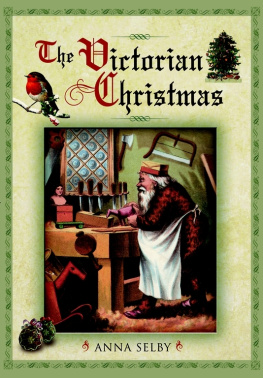

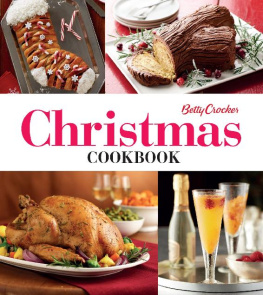

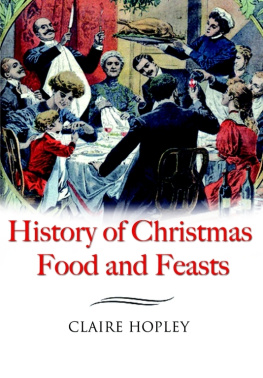

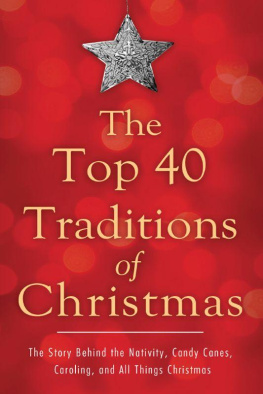
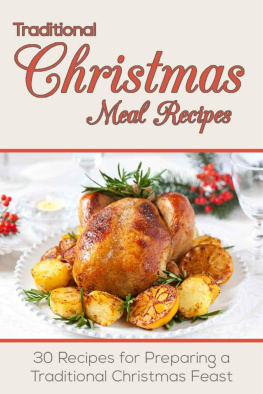
 The paper used in this publication meets the minimum requirements of American National Standard for Information SciencesPermanence of Paper for Printed Library Materials, ANSI/NISO Z39.48-1992.
The paper used in this publication meets the minimum requirements of American National Standard for Information SciencesPermanence of Paper for Printed Library Materials, ANSI/NISO Z39.48-1992.